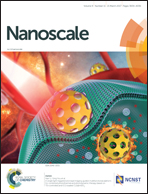Microwave reduction of graphene oxide rationalized by reactive molecular dynamics
Abstract
Obtaining graphene (GRA) in industrial quantities is among the most urgent goals in today's nanotechnology. Elegant methods involve the oxidation of graphite with its subsequent solvent-assisted exfoliation. The reduction of graphene oxide (GO) is challenging leading to a highly-disordered oxygen-rich material. A particularly successful microwave-induced reduction of GO was reported recently (Science, 2016, 353, 1413–1416). We mimic the experiment by reactive molecular dynamics and establish the molecular mechanisms of reduction and their time scales as functions of temperature. We show that the rapid removal of oxygen groups achieved by microwave heating leaves GRA sheets intact. The epoxy groups are most stable within GO. They can rearrange into the carbonyl groups upon quick heating. It is important to avoid creating holes upon graphite oxidation. They cannot be healed easily and undermine GRA thermal stability and electronic properties. The edge oxygen groups cannot be removed by irradiation, but their effect is marginal on the properties of μm GRA sheets. We demonstrate that different oxygen groups are removed from GO at drastically different temperatures. Therefore, it is possible to obtain separate fractions, e.g. carbonyl-, hydroxyl- and carboxyl-free partially reduced GO. Our results guide the improvement of the GO reduction methods and can be tested directly by experiment.



 Please wait while we load your content...
Please wait while we load your content...